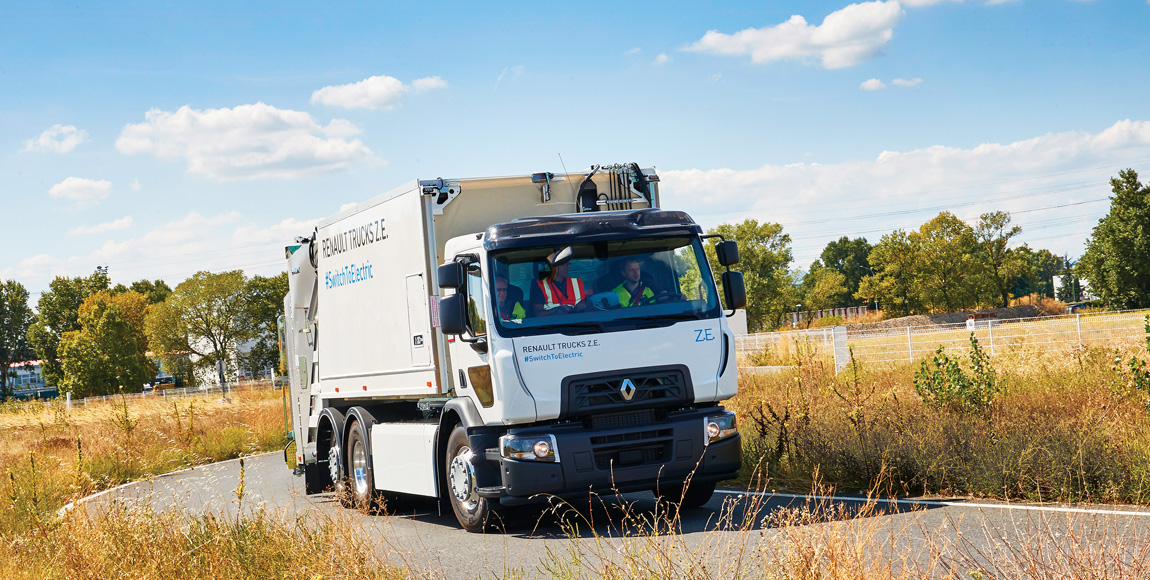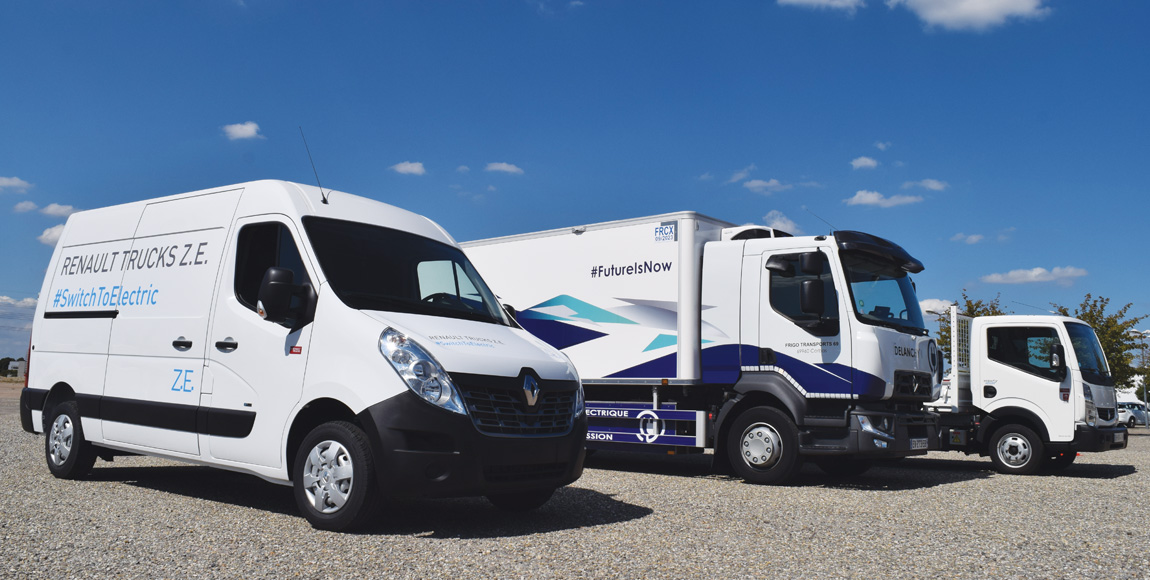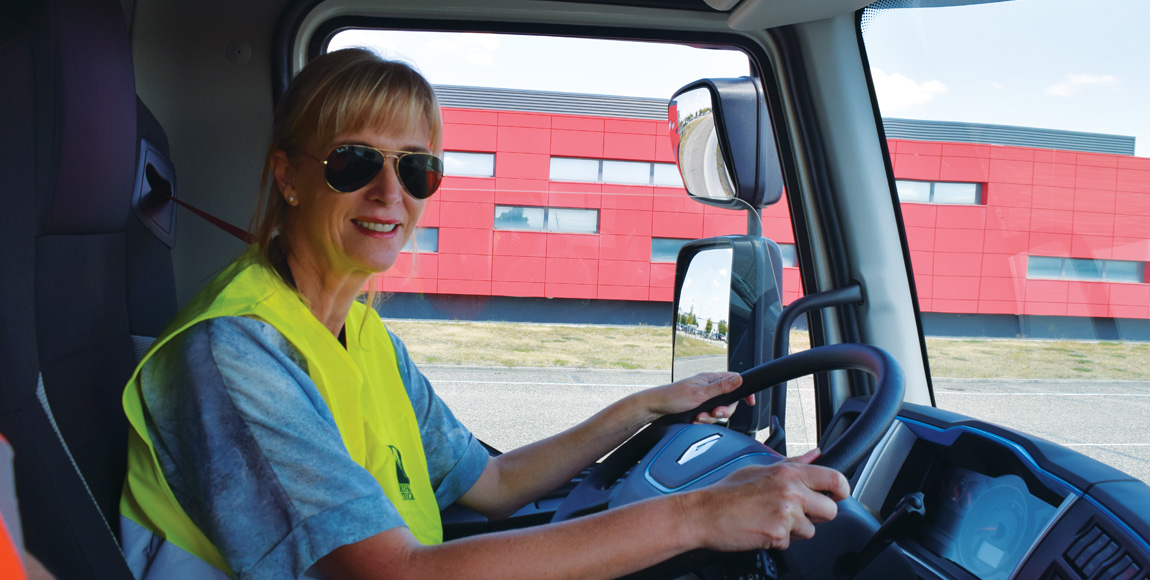Renault tosses its hat into the electric ring — again

I’ve been writing about electric trucks a lot this year. In fact, I hardly ever pen a Global Focus column that does not contain coverage of electric trucks – for good reason. Many of the major European truck makers — Daimler, Volvo, MAN and DAF — have blown their electric truck trumpets this year.
However, the path to electric propulsion has not been smooth. And, to be perfectly honest, operators haven’t exactly rushed forwards to place their orders.
However, I didn’t realise just how challenging the introduction of electric vehicles has been until I visited Renault Trucks in Lyon last month. The company has truly been a trailblazer within the field of electric propulsion. While it launched its first-generation electric trucks ten years ago, it sold grand total of 40 in the last decade. No, that’s neither a typo nor a bad joke.
Now, I don’t know about the rest of you, but, were I the boss of Renault Trucks, I could be tempted to put my electric trucks into hibernation. After all, one does not need to be a rocket scientist to realise that Renault must have sunk a bucket load of money into its electric trucks … only to be rewarded by massive losses.
Thankfully (for the planet), I’m not the boss of the company. That’s the task of its president, Bruno Blin, and he’s not backtracking when it comes to electric trucks. To the contrary, he actually took the decision to invest goodness knows how many euros in the brand’s second generation of electric trucks!

I drove the second-generation Renault Trucks D Wide ZE and also the new Master electric. A third electric vehicle — the Renault Trucks D ZE — completes the company’s latest e-vehicle line-up, meaning it now offers a comprehensive range of vehicles for city use … with capacities from 3,1 to 26 t.
Blin is understandably proud of the vehicles and his team. “We have been field testing electric trucks with our customer-partners in order to garner crucial information about usage, battery behaviour, charging facilities and specific maintenance requirements for ten years now.
“Ten years ago, we were the pioneers in promoting electric trucks to improve city air quality. Today, we can offer a range of electric vehicles with proven performance, and the experts in our network are ready to help our customers to transition to electro-mobility. Ten years ago we were pioneers; today we are experts,” he says.
That is a big claim, but the proof of the pudding lies in the driving.
So, how do these new vehicles fare? Brilliantly. The silent yet powerful Renault Master ZE, which was launched to the world at the IAA last month, is superb to drive. As is the case with many electric vehicles, there is masses of torque on tap immediately … so the vehicle is extremely responsive.
Ideal for last-mile deliveries, this intercity vehicle boasts 33 kWh lithium-ion batteries that take just six hours to charge. Its loading volume is the same as a conventional diesel Renault Master as the batteries are mounted under the front seats.
To protect the driver and the load and keep city-dwellers safe, the Master ZE is outfitted with a reversing camera, reversing radar system and wide-view mirror as standard features.
The Master is powered by a 57 kW electric motor, which delivers maximum torque of 225 Nm. It does a top speed of 100 km/h (you get there really fast!) and it offers a real-world operating range of 120 km.
The 16-t Renault Trucks D ZE and 26-t Renault Trucks D Wide ZE, on the other hand, are ideal for urban deliveries and refuse collection.
Like the Master, the trucks (which will be available next year) are blissful to drive. Incidentally, I am not the only person who thinks this way. While at the event in Lyon, I chatted to transport operators running the first-generation electric Renault trucks. They confided that, once a driver has tasted electric, he or she is most unlikely to want to ever return to diesel. I totally get this. It’s lovely to drive a truck that is both responsive and quiet.
The medium-duty Renault Trucks ZE vehicle has an operating range of up to 300 km depending on usage and battery configuration. As we all know, batteries are still terribly expensive. So, as is the case with the electric Volvo trucks that I reviewed earlier this year, customers will be encouraged to select as many batteries as they need. If, for instance, they only need a range of 200 km, it’s just plain silly to pay for batteries that offer a range of 300 km.
Available in two wheelbases (4 400 mm and 5 300 mm), the D ZE has a 185 kW electric motor (offering 130 kW of continuous output). The maximum torque of the electric motor is 425 Nm while maximum torque to the rear axle is 16 kNm. Up to 300 kWh of energy storage is available from the lithium-ion batteries.
The D WIDE ZE, on the other hand, comes with one wheelbase: 3 900 mm. It has two electric motors with a total rating of 370 kW (260 kW of continuous output).

Maximum torque of the electric motors is a whopping 850 Nm (it’s such a blast to drive this vehicle; the straight on the test track was actually too short for us to fully enjoy its performance). Maximum torque to the rear axle is 28 kNm. It boasts 200 kWh lithium-ion batteries and a real-world operating range of up to 200 km.
Thanks to rapid DC charging, the lithium-ion batteries in the D ZE and D Wide ZE can be fully charged in as little as one to two hours via the 150 kW Combo CCS connector. For overnight AC charging, it takes 12 hours to fully charge a 300-kWh battery via a three-phase, 380V, 32A industrial power socket.
For maximum flexibility in terms of usage and bodywork, both trucks are equipped with a power take-off and a standard mechanical interface.
While these vehicles are astoundingly good, one question must be asked: will Renault actually be able to sell them? After all, electric trucks that don’t sell won’t generate profits for the truck maker. They also won’t save the planet.
I think the answer to this question is yes. There is absolutely no question that they make both sense and cents in certain applications.
The Master will be ideal for inner-city deliveries. The trucks, on the other hand, are simply perfect for niche applications such as refuse removals (where the stop start nature of the application is guaranteed to deliver scary fuel consumption figures with diesel trucks).
Looking further into the future, these vehicles will sell as some cities — most notably in Europe — ban diesel vehicles from city centres.
Furthermore, sales will be encouraged by battery prices that are falling faster than ever before and electric drivetrains that are much more efficient than the outdated diesel technology. One thing is certain: the future is electric!
Published by
Charleen Clarke
focusmagsa




